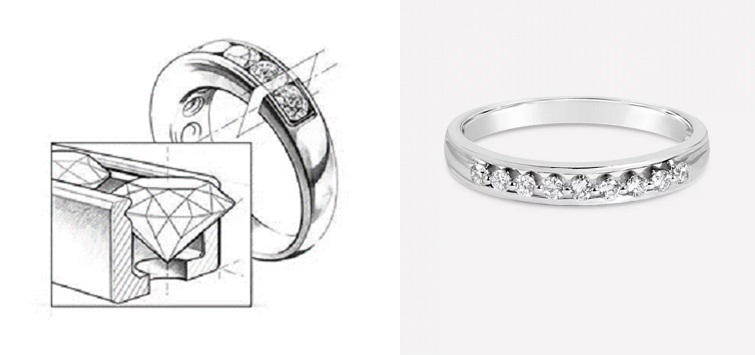Jewelry setting and mounting is the process of securing gemstones using various appropriate methods onto a setting, such as pendants, earrings, or chains, that are designed to hold the stones. It is a highly skilled craft, particularly in jewelry making, where gemstones (including various natural gemstones, semi-precious stones, and synthetic gems) are securely fixed to a framework. This art form originated in the West, where its techniques are more intricate and complex compared to traditional Eastern jade carving methods. Jewelry setting focuses on the finesse of design and craftsmanship, highlighting the unique qualities of the materials used, and combining various materials to create a more fashionable and aesthetically pleasing piece of jewelry.
1. Prong Setting Jewelry
Prong setting, also known as claw setting, is the most commonly seen method for setting gemstones and diamonds. It uses small metal prongs that resemble tiny claws, which bend around the gemstone’s girdle to securely hold it in place. This ensures the gemstone is safely and firmly positioned, while allowing light to enter from different angles, highlighting the brilliance of the stone.
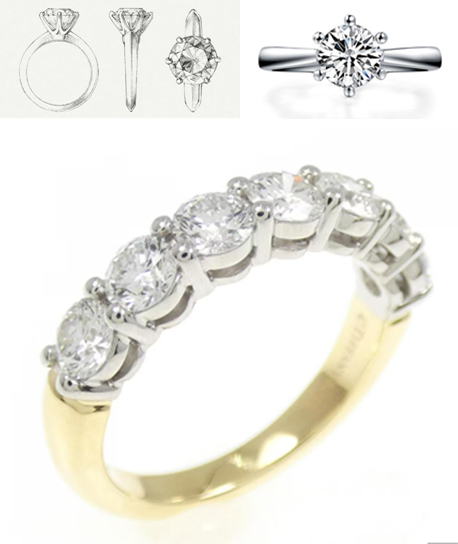
2. Bezel Setting Jewelry
Bezel setting refers to a technique where a metal rim or disk securely holds the gemstone at its girdle, encircling the entire edge of the stone. This ancient technique emphasizes the shape of the gemstone, particularly diamonds, while offering a modern, sleek appearance. The labor-intensive process requires precise craftsmanship to surround the stone’s edge with metal, ensuring a secure hold.
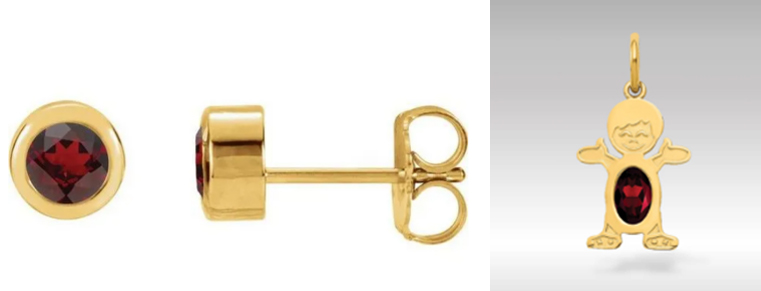
3. Pave Setting Jewelry
Pave setting is a type of prong setting where the prongs are extremely small and often hard to see. The prongs are typically triangular in shape and usually handcrafted. This method involves tiny prongs that hold the gemstone from either side or, alternatively, small metal beads or claws that secure the stone. Pave setting creates a continuous surface of gemstones, often giving the jewelry a sparkling, glittering effect. It is especially suitable for diamonds and is often used with platinum, creating the illusion of a piece entirely made up of diamonds.
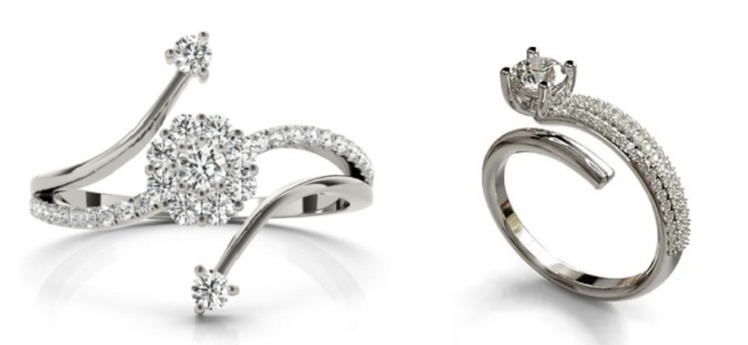
4. Forced Mounting Jewelry
Forced mounting is an impressive technique used primarily for princess-cut and rectangular gemstones. In this setting, the metal is so subtly worked that it appears as though no metal is present around the stone, creating the illusion that the entire piece is made from the gemstones themselves. This mounting is often used in designs where the gemstones are tightly arranged to create a seamless look.
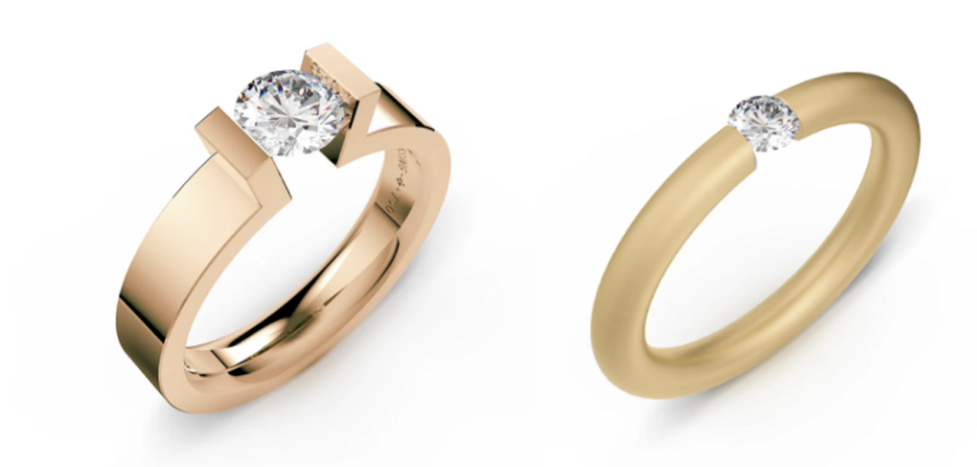
5. Clip Setting Jewelry
Clip setting involves a metal rod, similar to a rail, that passes through the ring. The gemstone is set between these rods, leaving both sides of the stone exposed to light. This mounting technique is becoming increasingly popular because it maximizes the amount of light that enters the stone, enhancing its brilliance and sparkle. Clip setting is a variation of forced mounting and often blends contemporary and classic design elements into one piece.
